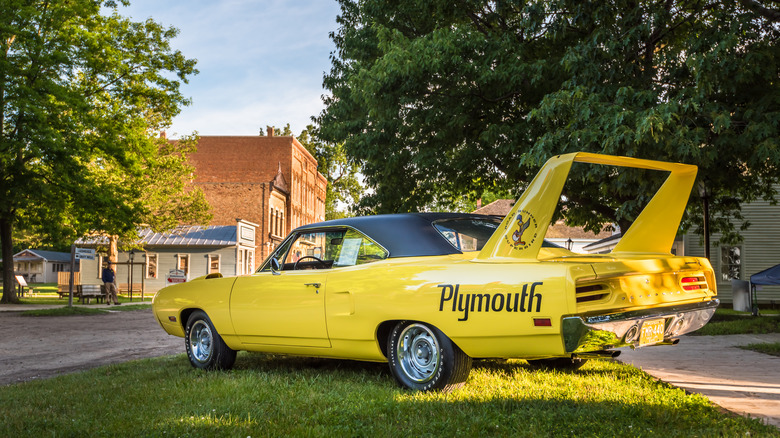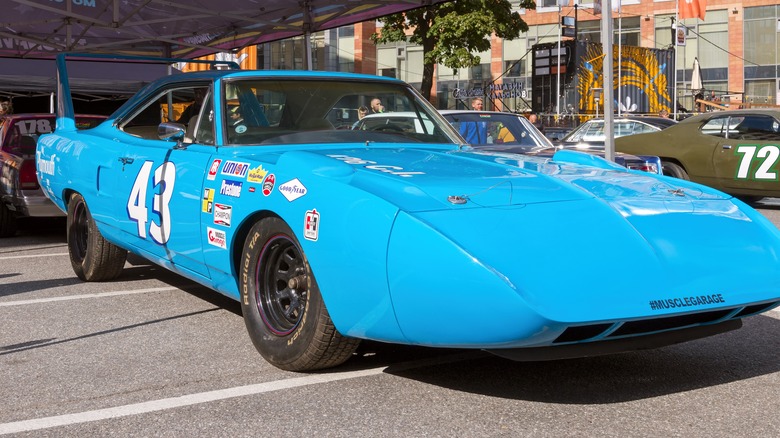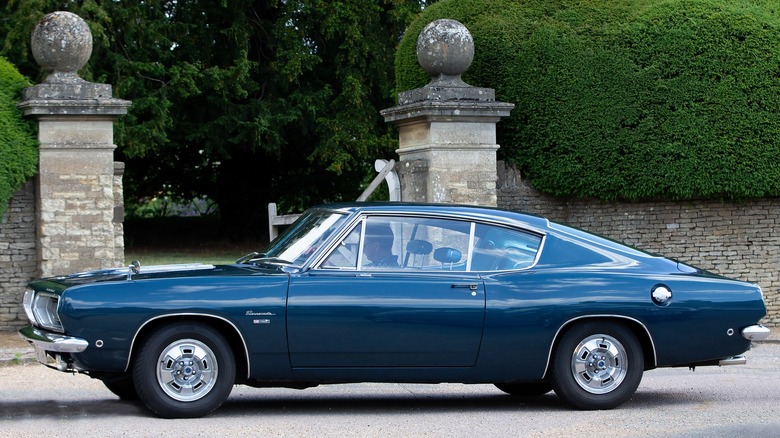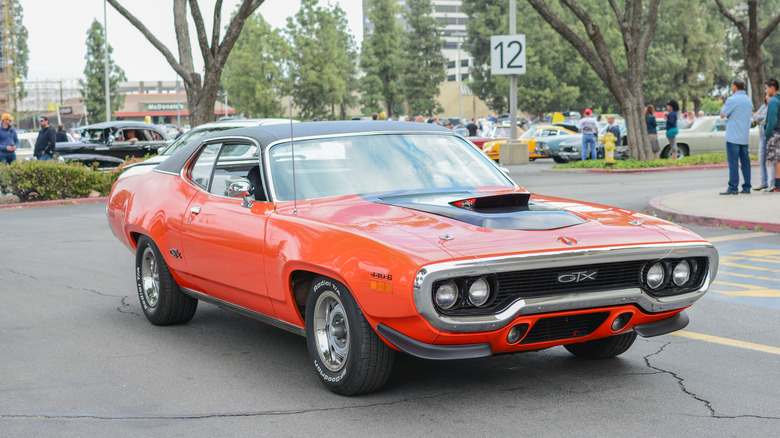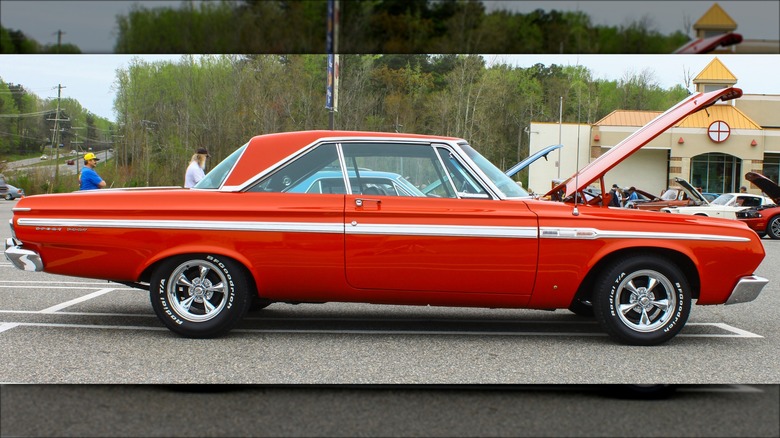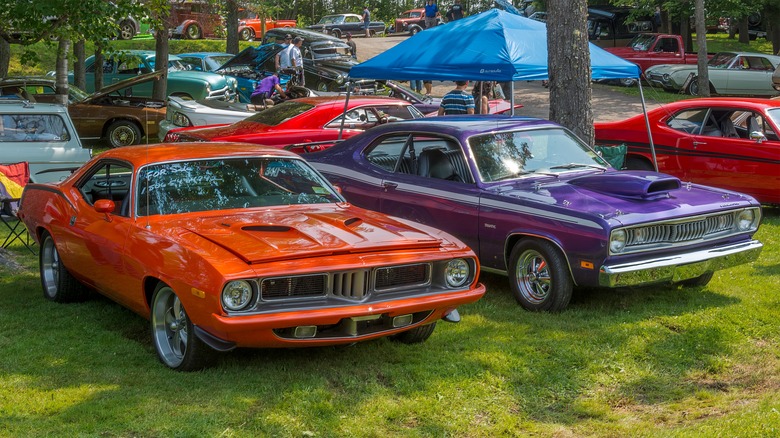Major Muscle: 5 Of The Most Powerful Plymouth Cars Ever Made
In the heyday of American muscle cars, Plymouth emerged as a surprising contender, shedding its image as Chrysler's affordable and less exhilarating sibling. The 1960s and early '70s marked a transformative era for Plymouth as it shifted gears to become a haven for fierce engines and heart-pounding excitement. Notably distinct from its Dodge counterpart, Plymouth carved out its own identity in the muscle car realm.
However, as the automotive landscape evolved, so did the challenges for companies like Plymouth. The late 1970s witnessed financial turbulence for Chrysler, impacting the trajectory of the Plymouth brand. Fast forward to 1999, DaimlerChrysler made the emotional decision to announce the end of Plymouth, citing its inability to contribute to the company's global growth strategy. Despite its historical significance, it makes sense why Chrysler ultimately killed off its iconic Plymouth brand — it became the casualty of the complex financial realities faced by the automotive industry and also some issues of their own like dwindling sales, outdated designs, and lack of innovation.
As unfortunate as the ending may be, Plymouth actually made some great cars with formidable powertrains and performance in its prime. So, here are five of the most powerful Plymouth cars ever made.
1970 Plymouth Superbird
This car is interesting because it's a heavily modified Road Runner, which was also how the legendary Plymouth Superbird got its name. It was a limited production explicitly made to win the NASCAR Grand National Series competition. Being born out of Plymouth's pursuit to reclaim dominance in NASCAR, and responding to competitors like Ford and Dodge in the 1969 season, made the Superbird super — its aerodynamic advancements and powerful engine options set it apart, driving its success on the race track. At the heart of the Superbird resides the 7-liter Hemi V8 engine, generating 433 horsepower and torque reaching 472 lb-ft. This propelled the car from 0 to 60 mph in a quick 5.5 seconds, with a top speed of 185 mph, establishing itself as the fastest Plymouth muscle car to grace the roads.
Interestingly, the masses initially reluctantly met the Superbird's distinctive design. It features an aggressive aerodynamic profile, highlighted by an imposing rear wing, and an aerodynamically sloped front bumper with an integrated splitter, which might have been too weird for people, according to Trust Auto.
However, the Superbird's racing legacy faced a premature end as NASCAR altered regulations, restricting engine displacement and imposing weight penalties, effectively sidelining cars with larger engines and ultimately creating an interesting story behind NASCAR banning the 1970 Plymouth Superbird. Despite initial challenges in sales due to its extreme design and limited practicality for daily use, the Superbird has become a coveted classic among car collectors today.
1968 Plymouth Barracuda
Introduced in response to the Mustang's debut, the second-generation Barracuda elevated performance with a range of engine options, including the revered Hemi V8, which was limited to only 50 fastback Barracudas (The Hemi V8 seems to be a common thread among the most powerful Plymouth cars).
Plymouth's distinctive design was also apparent in the 1968 Barracuda's sleek silhouette and split grille — the mid-1960s American automobile design motif. Of the 45,412 units produced, only 2,840 were convertibles. Remarkably, these cars proved resilient, defying expectations of longevity, with some instances of unrestored models clocking over 450,000 miles.
The Barracuda's lineup included a spectrum of powertrains, from the potent 426 Hemi reserved for drag racing to the more practical 318-cu.in. The Formula S package offered a balance of power and style, featuring engines like the 275-hp 340 V8 or the more powerful 383 with 300 hp, coupled with performance enhancements like wider wheels, heavy-duty suspension, and dual exhausts.
1971 Plymouth GTX
Back in '71, when other cars lost power in a market flooded with detuned V8s, the GTX maintained its muscle. The redesign of '71 brought a sleek "fuselage" styling, a shorter wheelbase, and enhanced handling with a widened rear track.
The GTX's features included a front-engine, rear-wheel-drive setup housed in a steel unibody chassis. Under the hood, the powertrains were a marvel in their own right. The standard 440 four-barrel and the optional triple-two-barrel (440+6) showed that Plymouth wasn't messing around. Even the rarely chosen 426 Hemi brought a whopping 425 horsepower. Transmission choices ranged from 3-speed manuals to the famed TorqueFlite automatic.
According to some reviews, the styling and driver comfort were improved, but the increased weight did impact performance. Despite this slight increase in weight, the '71 GTX could still conquer the quarter-mile in under 14 seconds, clocking over 100 mph. The stiff suspension rates, though aiding handling, led to a less-than-optimal ride. In the end, the GTX faced the inevitable fate of many muscle cars, succumbing to changing times and regulations. 1971 marked its final year, leaving fans with memories of its powerful run. Even though only 2,942 were made in 1971, the Plymouth GTX remains a symbol of a time when cars were all about power, even as things were changing around them.
1964 Plymouth Sport Fury 426
Rooted in a legacy that began with the 1956 Plymouth Fury, the 1962 Sport Fury brought a lot to the table in terms of performance with its 426 Max Wedge V8 engine. Chrysler introduced the legendary 426 Hemi V8 in 1964, and elevated the Sport Fury to a whole other league. This massive engine was available in two variants: a 415-horsepower base version with 11:1 compression, or a high-compression variant at 12.5:1 with 425 horsepower. The 7-liter Commando Hemi V8 engine on the Sport Fury delivered 435 horsepower and a torque of 480 lb-ft, and catapulted the car from 0 to 60 mph in just 4.9 seconds, with a top speed reaching 126 mph. To add to its list of performance specs, the car also recorded a quarter-mile time of 13.5 seconds.
When compared to other models of its time, the 426 Sport Fury's performance was almost unchallenged. Other variations of the Plymouth Sport Fury, such as the 318 V8 model, offered respectable performance but paled in comparison to the sheer might of the 426 Commando. When it comes to style and design, the Sport Fury was a 2-door coupe derivative of the Plymouth Belvedere, and was also considered somewhat technologically advanced for the time.
1970 Plymouth Duster
The 1970 Plymouth Duster 340 was something like an underdog of muscle cars, giving a powerful punch without breaking the bank. Under the hood, it had a strong 340-cid V-8 engine, known for packing a punch. Some said it had 275 bhp, but rumors hinted it could be closer to 325 bhp. This little car wasn't just about power; it handled the road well, too.
Priced at just $2,547 (over $20,000 in 2023 dollars), it was also the most affordable in Plymouth's Rapid Transit System. You could choose between a three-speed manual, optional four-speed, or TorqueFlite transmissions for different driving experiences. The Duster 340 also had some cool features for performance, like a heavy-duty suspension, front stabilizer bar, and six-leaf rear springs that made it great on the road.
While the Duster 340 exuded a certain charm, it didn't escape without a few drawbacks. The stiff, slightly lowered suspension sacrificed ride comfort, translating into an uncomfortable experience, particularly in fast corners. The absence of scoops and minimal hot-car cues might have left enthusiasts craving a more visually striking presence as well. Looking at the bigger picture, the Duster 340 had a good start in 1970 and did well in its second year. However, things changed in the early '70s with oil supply issues, higher insurance costs, and people wanting different kinds of cars. Today, the Duster 340 is a reminder of Plymouth's attempt to make a muscle car that was affordable and fun.
